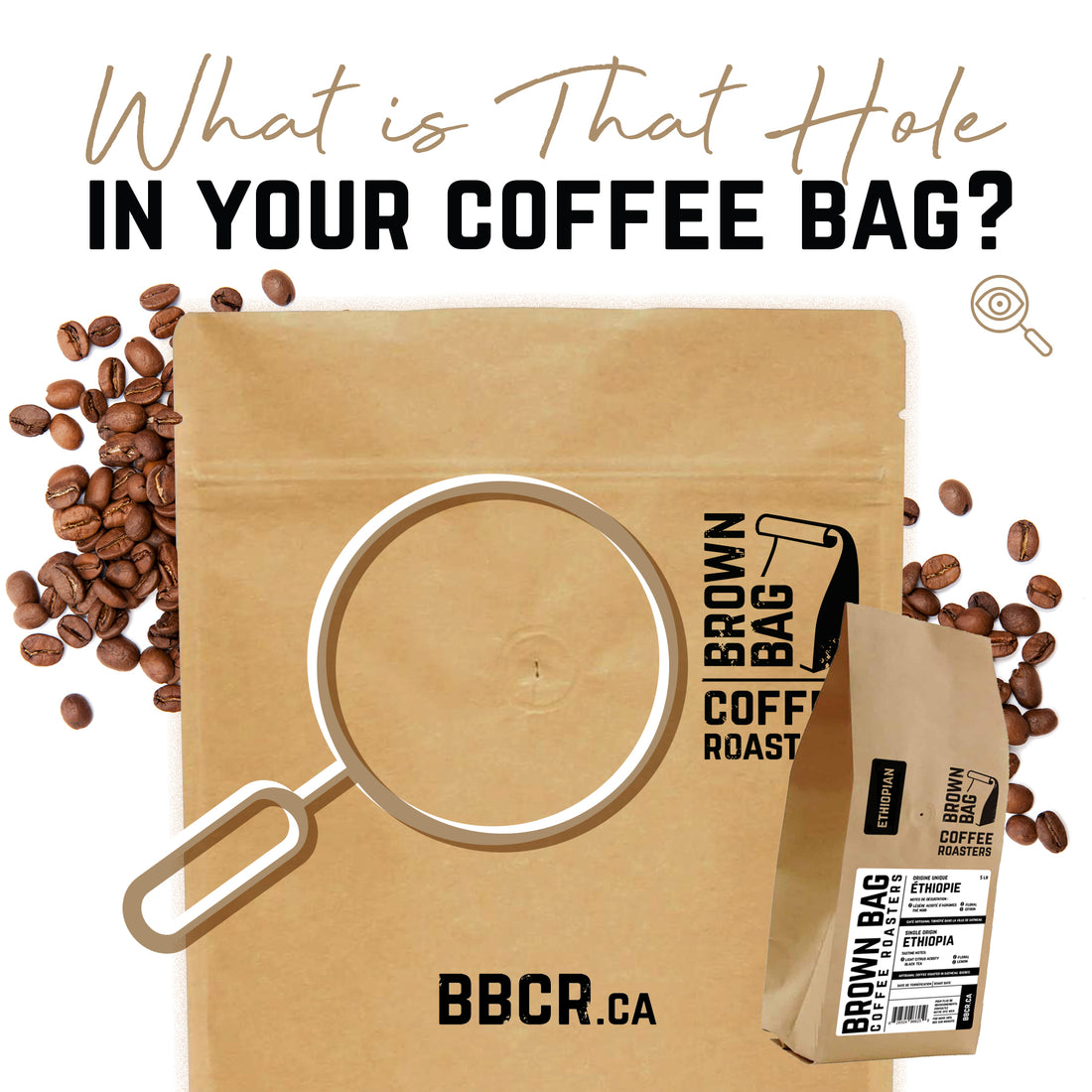
What is that hole in your coffee bag?
Share

I spy with my little eye… You might have noticed a small pin hole located on your bag. Occasionally when people grab a bag of coffee, they'll squeeze the bag with their nose near it to get a whiff of the goods inside. Not just a "smelling hole " , that little belly button is actually a one-way valve, which allows you to squeeze air out without letting any air in, and it is critical to the shelf life of the coffee and the preservation of the bag itself.
THE SCIENCE: When coffee is fresh roasted, it releases carbon dioxide. It is basically a by-product of the roasting process. When the coffee is ground, carbon dioxide is released expeditiously. If you simply place fresh roasted coffee in a completely sealed bag, the bag will expand and in most cases rupture. The other option is to let the coffee rest outside of a container. However, oxygen is the enemy of fresh roasted coffee. By allowing the coffee to be exposed to air for an extended period of time, it accelerates the staling process of the coffee. So, what can be done to retain the coffees freshness while allowing it to naturally de-gas? That's where the one-way valve comes into play.
That valve on your bag allows for the carbon dioxide to escape from inside the bag without allowing oxygen to enter the sealed bag.
Why not use the original packaging to store your coffee beans? The best and easiest thing for you to keep your coffee in is the bag you get it in from us.
TO SUMMARIZE: At Brown Bag Coffee Roasters, we have chosen our bags wisely. Not only does the kraft bag reflect our name, it also preserves freshness like crazy. It has a one-way valve that lets CO2 out and doesn't let oxygen in. It reseals easily. It stands upright easily. It comes labeled, so you never lose track of what the coffee is and when it was roasted.
Looking for more coffee storage solutions? In the BBCR shop we also have some really cool canisters for storing your coffee.
